Phase Composition Effects on Dynamic Behavior and Strain Rate Sensitivity in Metastable β-Ti Alloys
Abstract
:1. Introduction
2. Experimental Procedure
2.1. Materials
2.2. Mechanical Properties
2.3. Microstructure Characterization
3. Result and Discussion
3.1. Phase Composition Effects on Mechanical Behaviours
3.2. Phase Composition Effects on Deformation Modes
3.3. Phase Composition Effects on Failure Modes
4. Conclusions
Author Contributions
Funding
Institutional Review Board Statement
Informed Consent Statement
Data Availability Statement
Acknowledgments
Conflicts of Interest
References
- Wang, Y.L.; Hao, M.Y.; Li, D.; Liang, Q.L.; Wang, D.; Zheng, Y.F.; Sun, Q.Y.; Wang, Y.Z. Enhanced mechanical properties of Ti-5Al-5Mo-5V-3Cr-1Zr by bimodal lamellar precipitate microstructures via two-step aging. Mater. Sci. Eng. A 2022, 829, 142117. [Google Scholar] [CrossRef]
- Boyer, R.R. An overview on the use of titanium in the aerospace industry. Mater. Sci. Eng. A 1996, 213, 103–114. [Google Scholar] [CrossRef]
- Jiang, B.Z.; Emura, E.; Tsuchiya, K. Microstructural evolution and its effect on the mechanical behavior of Ti-5Al-5Mo-5V-3Cr alloy during aging. Mater. Sci. Eng. A 2018, 731, 239–248. [Google Scholar] [CrossRef]
- Qin, D.Y.; Zhao, F.; Li, Y.L. The conflicts between strength and ductility of bimodal Ti-5553 alloy with fine equiaxial prior β grains. Mater. Sci. Eng. A 2022, 841, 143074. [Google Scholar] [CrossRef]
- Suri, S.; Viswanathan, G.B.; Neeraj, T.; Hou, D.H.; Mills, M.J. Room temperature deformation and mechanisms of slip transmission in oriented single-colony crystals of an α/β titanium alloy. Acta Mater. 1999, 47, 1019–1034. [Google Scholar] [CrossRef]
- Zheng, Y.; Sosa, J.S.; Williams, R.E.A.; Wang, Y.; Banerjee, R.; Fraser, H.L. The role of omega phase in non-classical homogeneous precipitation of the alpha phase in beta-titanium alloys. Scripta Mater. 2016, 111, 81–84. [Google Scholar] [CrossRef]
- Nag, S.; Zheng, Y.; Williams, R.E.A.; Devaraj, A.; Boyne, A.; Wang, Y.; Collins, P.C.; Viswanathan, G.B.; Tiley, J.S.; Muddle, B.C.; et al. Non-Classical homogeneous precipitation mediated by compositional fluctuations in titanium alloys. Acta Mater. 2012, 60, 6247–6256. [Google Scholar] [CrossRef]
- Semiatin, S.L.; Bieler, T.R. The effect of alpha platelet thickness on plastic flow during hot working of Ti-6Al-4V with a transformed microstructure. Acta Mater. 2001, 49, 3565–3573. [Google Scholar] [CrossRef]
- Maruyama, K.; Yamada, N.; Sato, H. Effects of lamellar spacing on mechanical properties of fully lamellar Ti—39.4mol%Al alloy. Mater. Sci. Eng. A 2001, 319–321, 360–363. [Google Scholar] [CrossRef]
- Clément, N.; Lenain, A.; Jacques, P.J. Mechanical property optimization via microstructural control of new metastable beta titanium alloys. JOM 2007, 59, 50–53. [Google Scholar] [CrossRef]
- Waheed, S.; Zheng, Z.B.; Balint, D.S.; Dune, F.P. Microstructural effects on strain rate and dwell sensitivity in dual-phase titanium alloys. Acta Mater. 2019, 162, 136–148. [Google Scholar] [CrossRef]
- Zheng, Z.; Waheed, S.; Balint, D.S.; Dune, F.P. Slip transfer across phase boundaries in dual phase titanium alloys and the effect on strain rate sensitivity. Int. J. Plast. 2018, 104, 23–38. [Google Scholar] [CrossRef]
- Ran, C.; Chen, P.W.; Li, L.; Zhang, W.F.; Liu, Y.L.; Zhang, X. High-strain-rate plastic deformation and fracture behaviour of Ti-5Al-5Mo-5V-1Cr-1Fe titanium alloy at room temperature. Mech. Mater. 2018, 116, 3–10. [Google Scholar] [CrossRef]
- Mishra, A.; Martin, M.; Thadhani, N.N.; Kad, B.K.; Kenik, E.A.; Meyers, M.A. High-strain-rate response of ultra-fine-grained copper. Acta Mater. 2008, 56, 2770–2783. [Google Scholar] [CrossRef]
- Meyers, M.A. Dynamic Behavior of Materials; Wiley-Interscience: New York, NY, USA, 1994; pp. 323–326. [Google Scholar]
- Rittel, D.; Wang, Z.G. Thermo-mechanical aspects of adiabatic shear failure of AM50 and Ti6Al4V alloys. Mech. Mater. 2008, 40, 629–635. [Google Scholar] [CrossRef]
- Bintu, A.; Vincze, G.T.; Picu, R.C.; Lopes, A.B.; Bdikin, I. Scale dependence of the strain rate sensitivity of Twinning-Induced Plasticity steel. Mater. Sci. Eng. A 2016, 674, 98–103. [Google Scholar] [CrossRef]
- Zheng, Z.; Balint, D.S.; Dunne, F.P.E. Discrete dislocation and crystal plasticity analyses of load shedding in polycrystalline titanium alloys. Int. J. Plast. 2016, 87, 15–31. [Google Scholar] [CrossRef] [Green Version]
- Kumar, N.N.; Tewari, R.; Durgaprasad, P.V.; Dutta, B.K.; Dey, G.K. Active slip systems in bcc iron during nanoindentation: A molecular dynamics study. Comput. Mater. Sci. 2013, 77, 260–263. [Google Scholar] [CrossRef]
- Karewar, S.; Gupta, N.; Groh, S.; Martinez, E.; Caro, A.; Srinivasan, S.G. Effect of Li on the deformation mechanisms of nanocrystalline hexagonal close packed magnesium. Comput. Mater. Sci. 2017, 126, 252–264. [Google Scholar] [CrossRef] [Green Version]
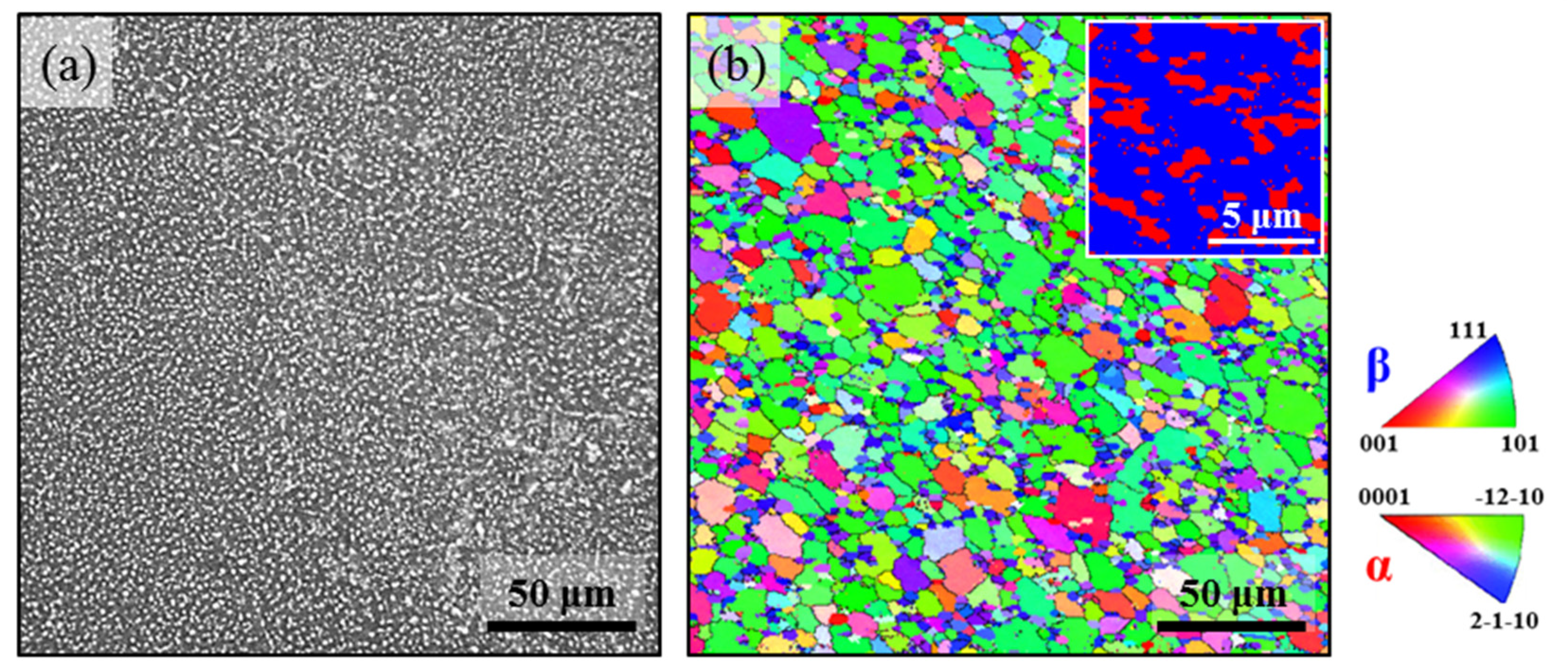


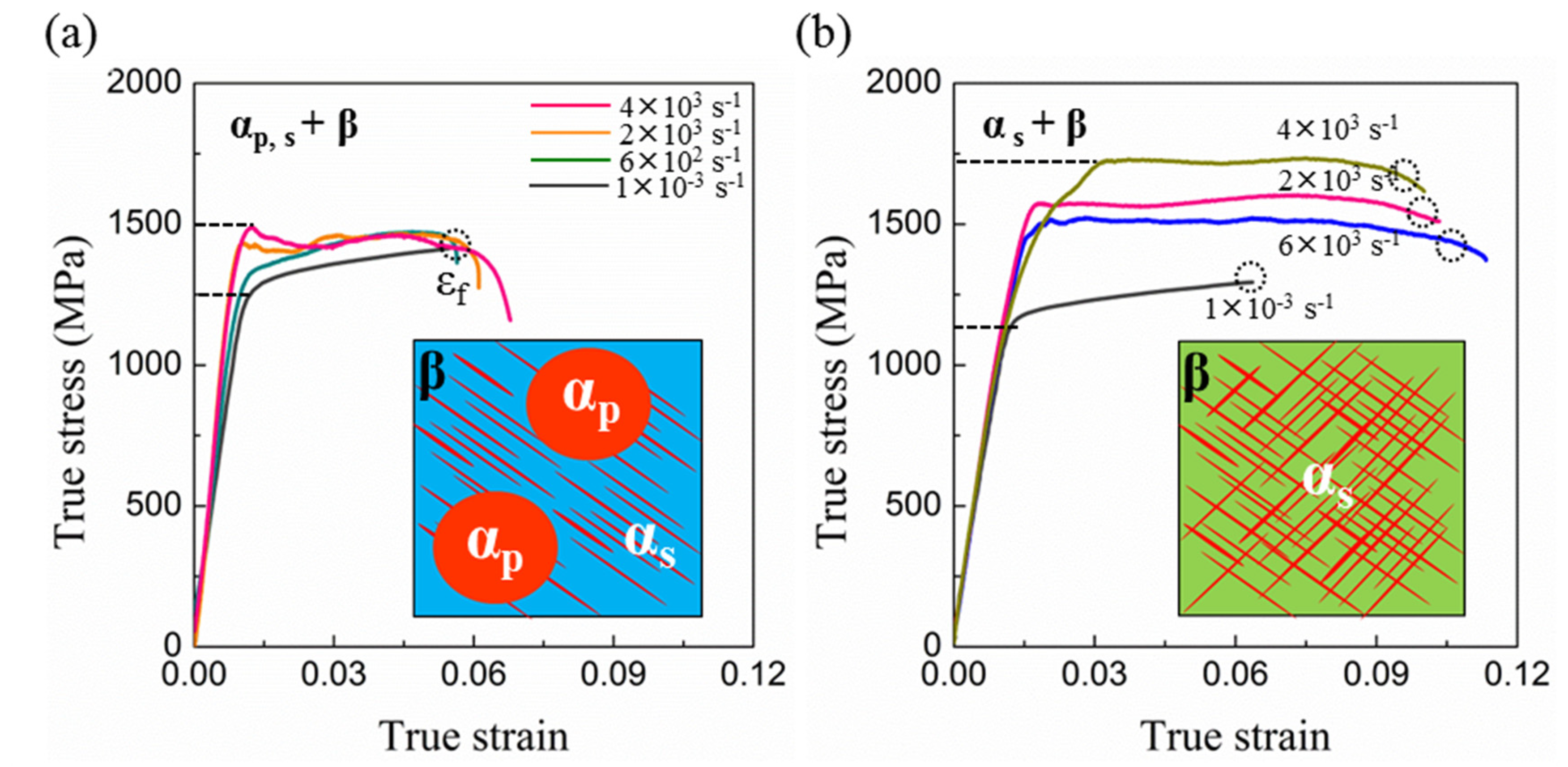
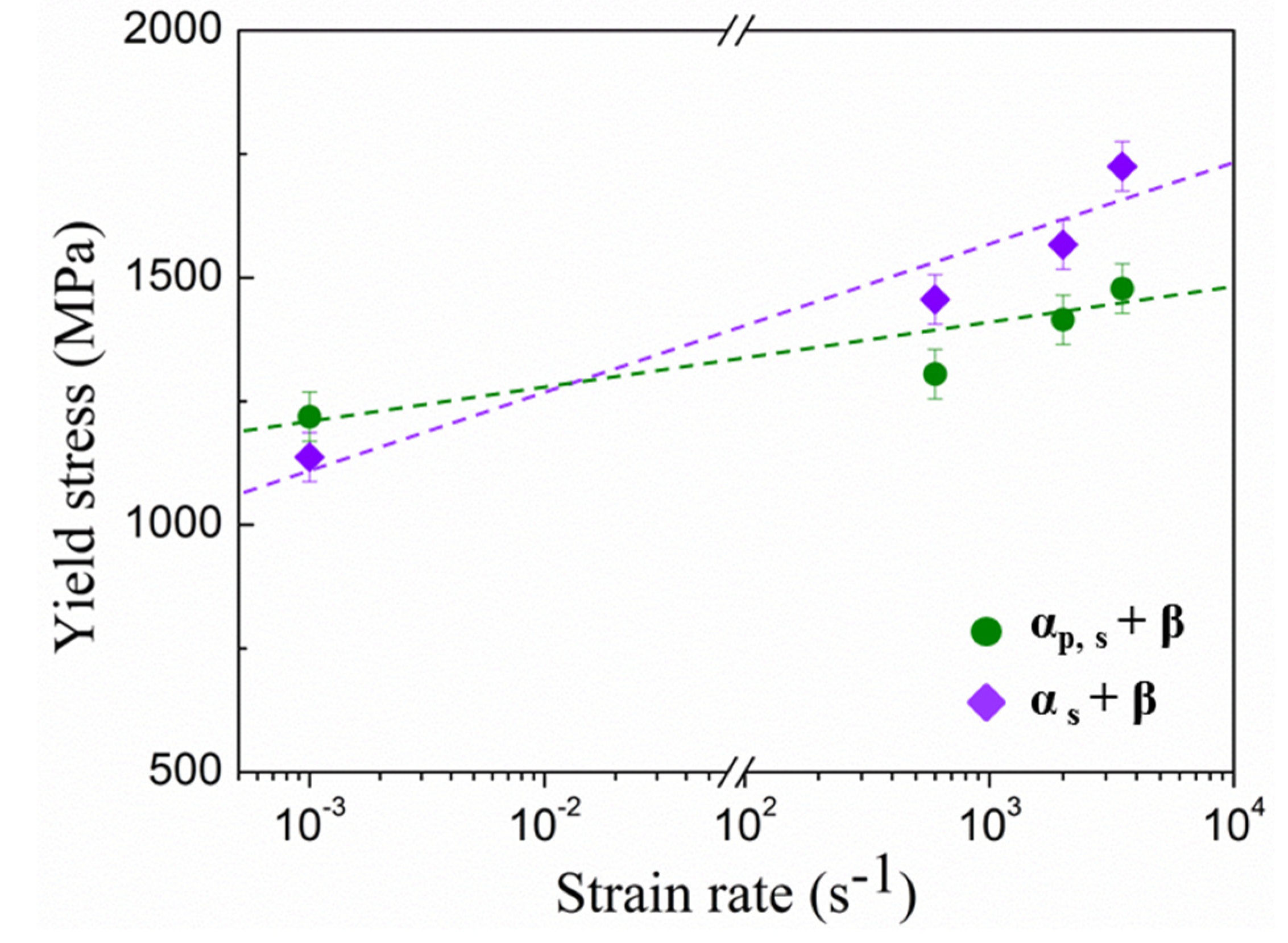

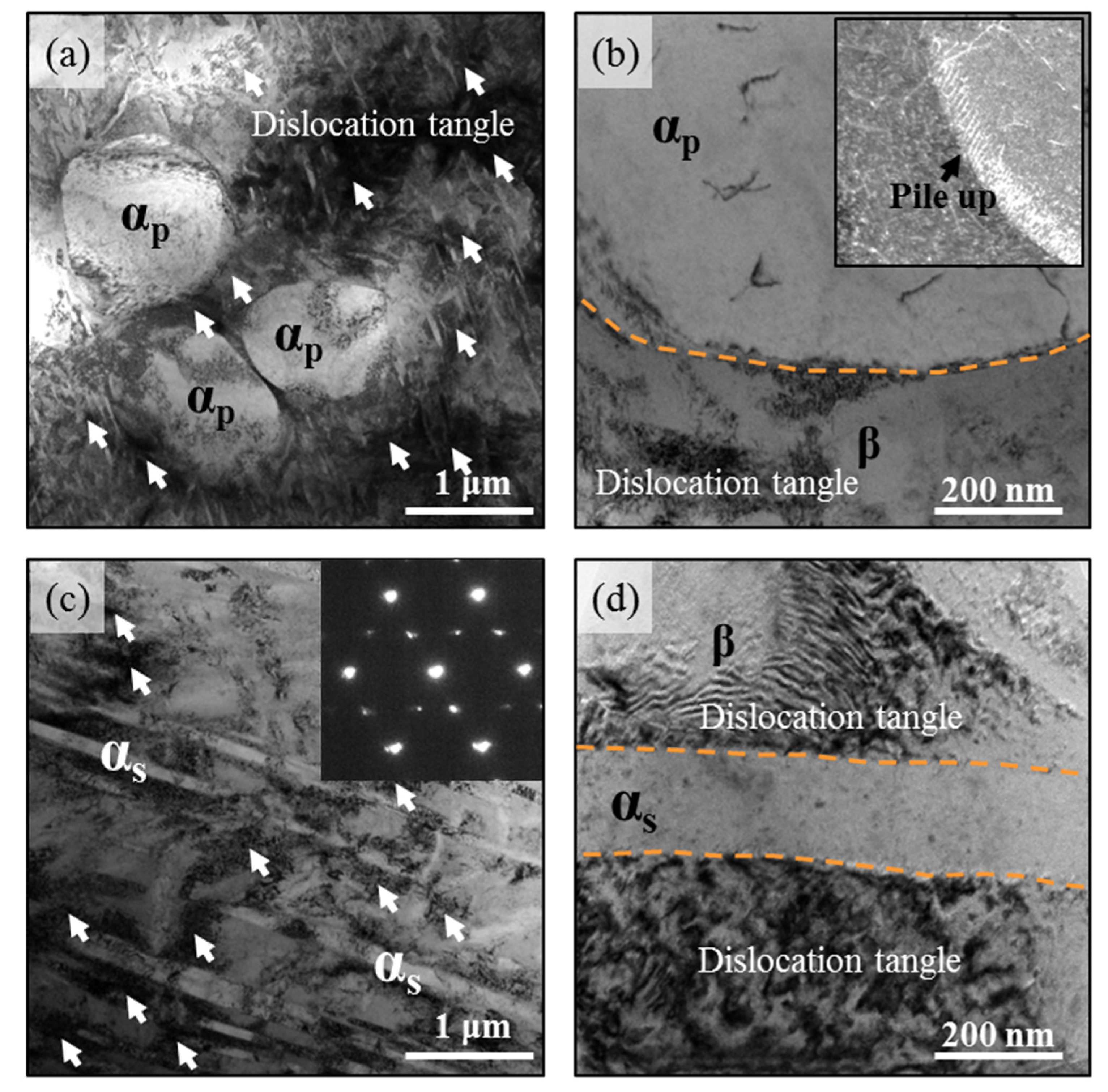
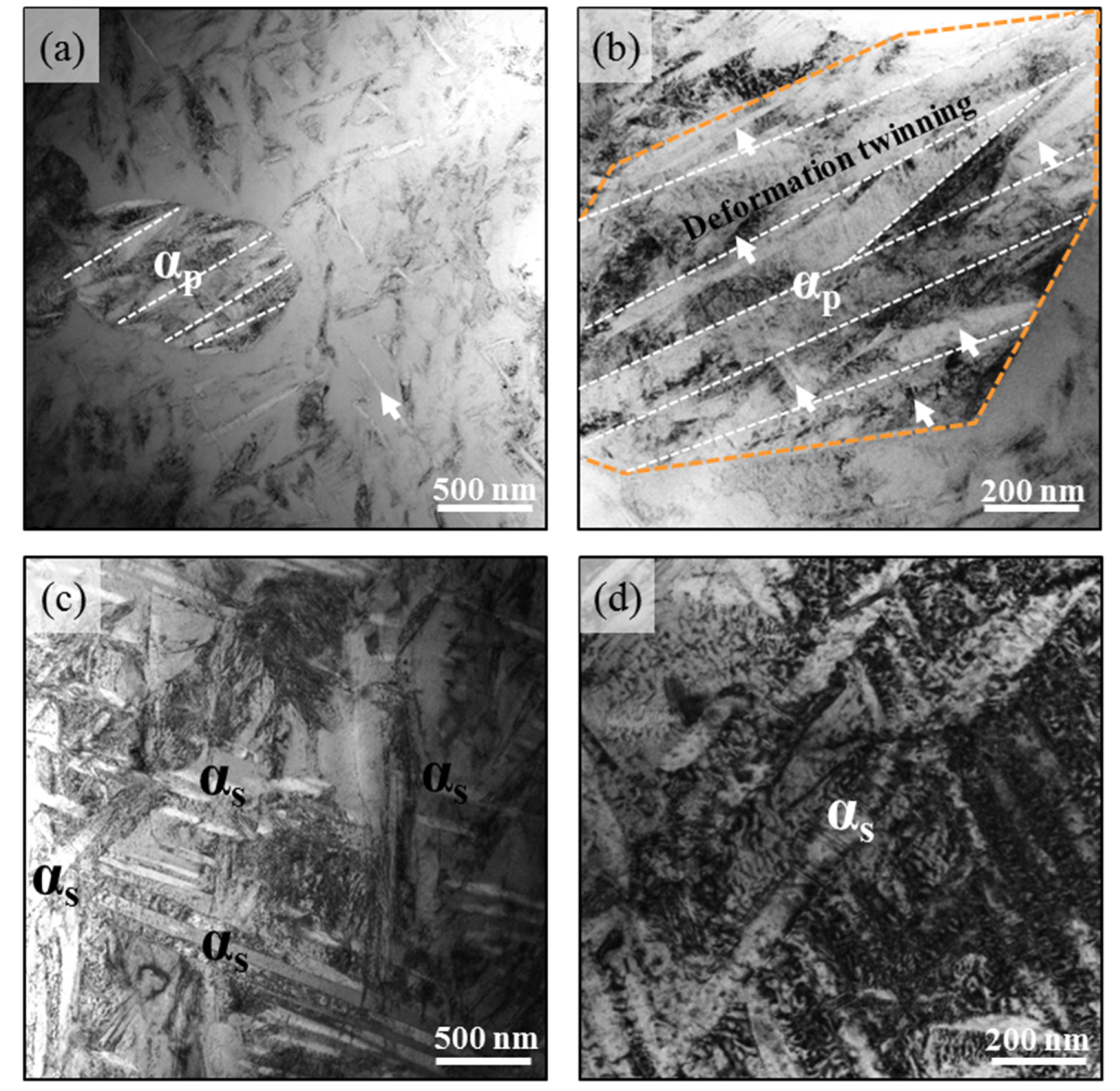
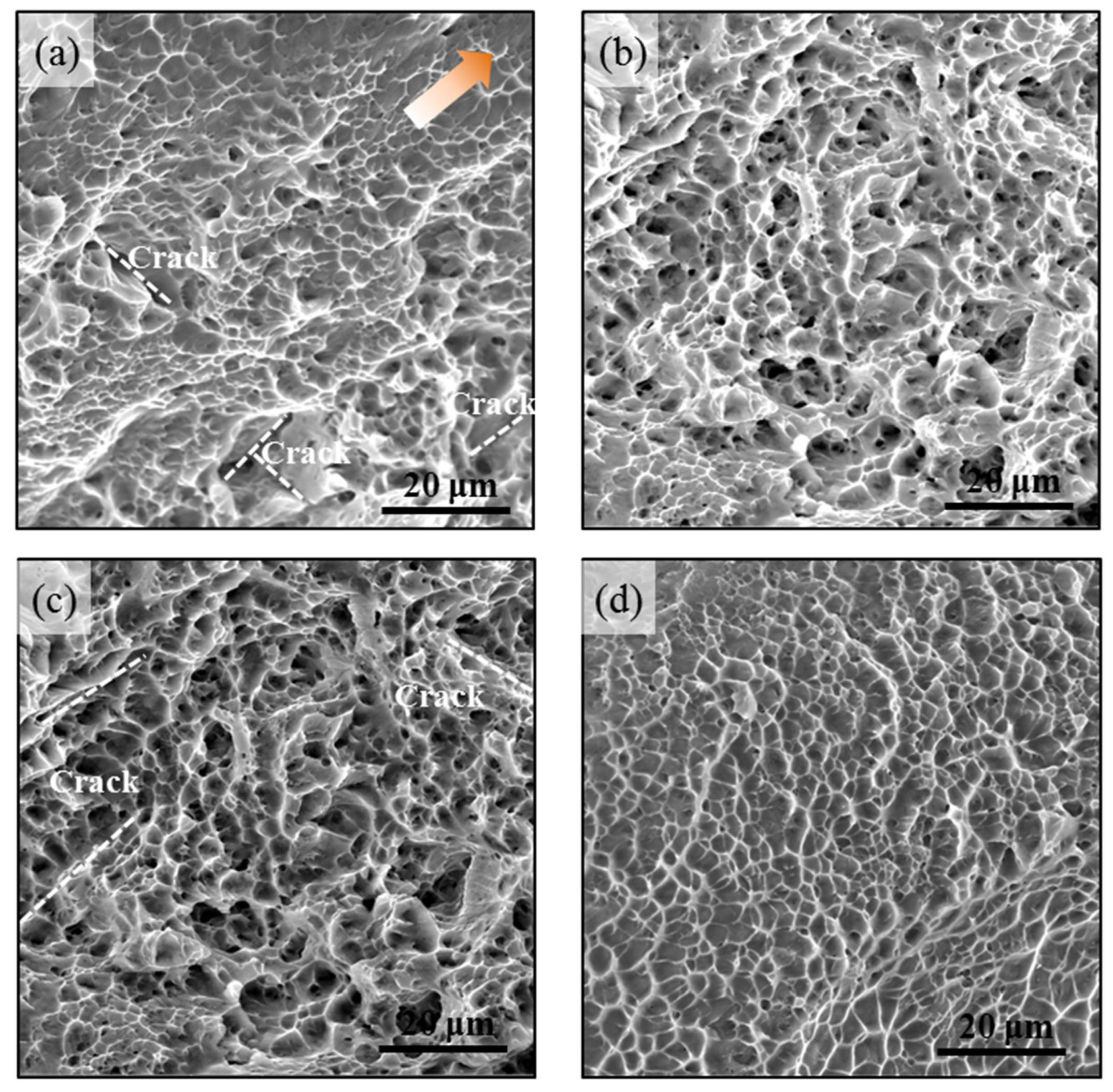
Publisher’s Note: MDPI stays neutral with regard to jurisdictional claims in published maps and institutional affiliations. |
© 2022 by the authors. Licensee MDPI, Basel, Switzerland. This article is an open access article distributed under the terms and conditions of the Creative Commons Attribution (CC BY) license (https://creativecommons.org/licenses/by/4.0/).
Share and Cite
Wang, T.; Feng, Y.; Liu, X.; Wang, K.; Li, S.; Zhao, F. Phase Composition Effects on Dynamic Behavior and Strain Rate Sensitivity in Metastable β-Ti Alloys. Materials 2022, 15, 4068. https://doi.org/10.3390/ma15124068
Wang T, Feng Y, Liu X, Wang K, Li S, Zhao F. Phase Composition Effects on Dynamic Behavior and Strain Rate Sensitivity in Metastable β-Ti Alloys. Materials. 2022; 15(12):4068. https://doi.org/10.3390/ma15124068
Chicago/Turabian StyleWang, Tao, Yong Feng, Xianghong Liu, Kaixuan Wang, Shaoqiang Li, and Feng Zhao. 2022. "Phase Composition Effects on Dynamic Behavior and Strain Rate Sensitivity in Metastable β-Ti Alloys" Materials 15, no. 12: 4068. https://doi.org/10.3390/ma15124068





